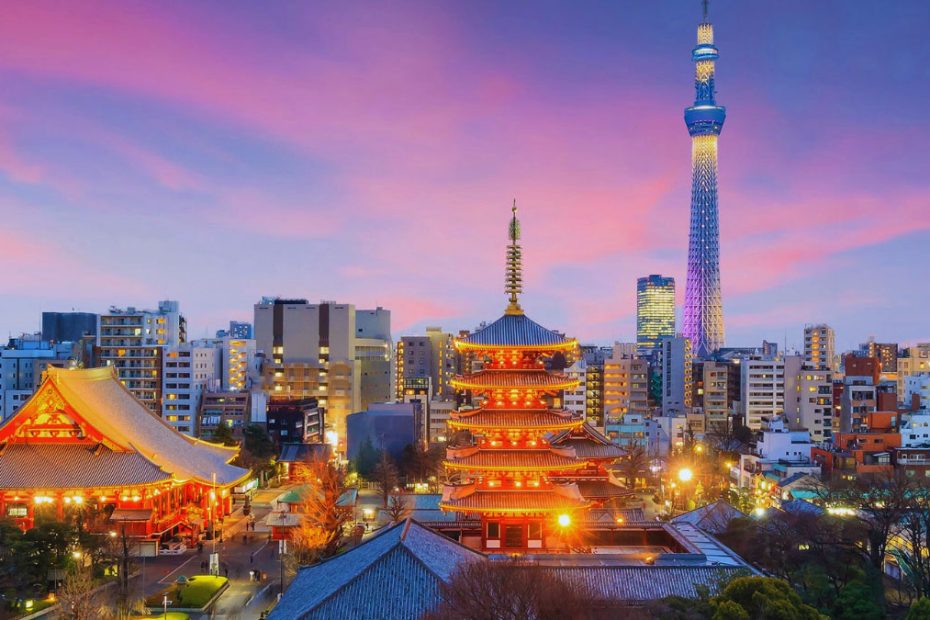Tokyo dazzles with its neon lights, bustling streets, and rich culture, making it a dream destination for many. When I first planned my trip to this vibrant city, I wanted to make sure I experienced the best it had to offer without feeling overwhelmed. That’s why I crafted a 6-day itinerary that balances iconic landmarks, hidden gems, and a taste of local life.
Key Takeaways
- Diverse Experiences: The 6-day itinerary in Tokyo includes a mix of iconic landmarks, vibrant districts, and serene parks, offering a well-rounded glimpse of Japan’s capital.
- Day Trips: Notable day trips to Hakone and Nikko provide a refreshing change from the city’s hustle, showcasing natural beauty and historical sites.
- Cultural Immersion: Key cultural sites like Senso-ji Temple, Meiji Shrine, and Toshogu Shrine offer deep insights into Japan’s rich history and traditions.
- Modern Attractions: Experience modern Tokyo with visits to bustling Shibuya, the innovative TeamLab Borderless Museum, and the electrifying Akihabara district.
- Relaxing Spots: Enjoy serene moments at locations such as Shinjuku Gyoen National Garden, Sumida Park, and Odaiba Seaside Park.
- Culinary Delights: The itinerary features opportunities to savor local Japanese cuisine, from street foods in Nakamise Shopping Street to fresh sushi in Odaiba.
Overview Of The 6 Days Itinerary In Tokyo, Japan
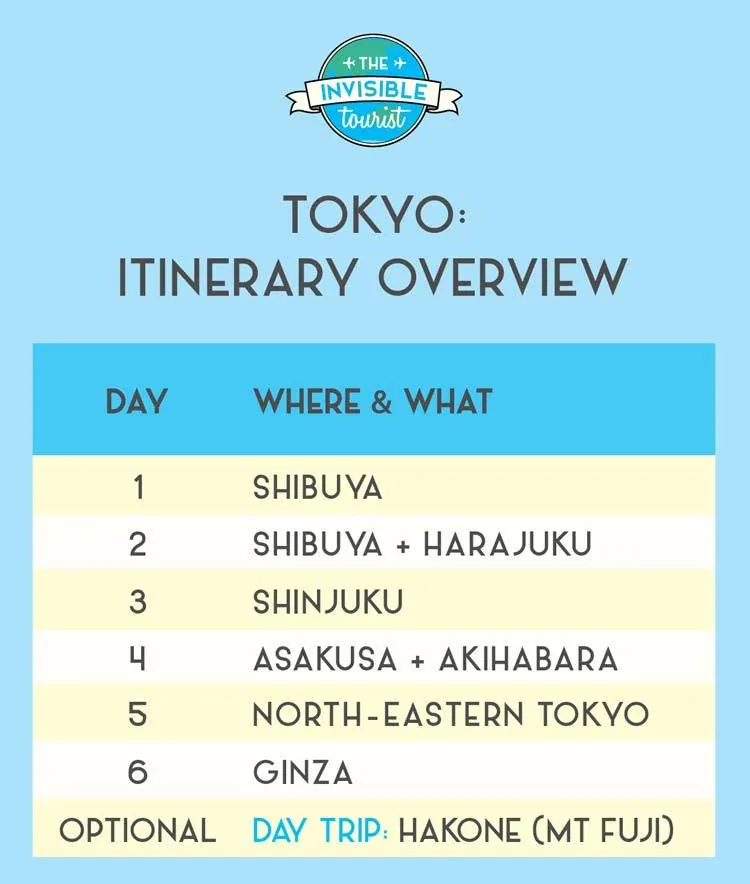
In my recent adventure to Tokyo, I crafted a detailed itinerary to capture the essence of Japan’s capital. Each day was meticulously planned to cover everything from central landmarks to off-the-beaten-path treasures.
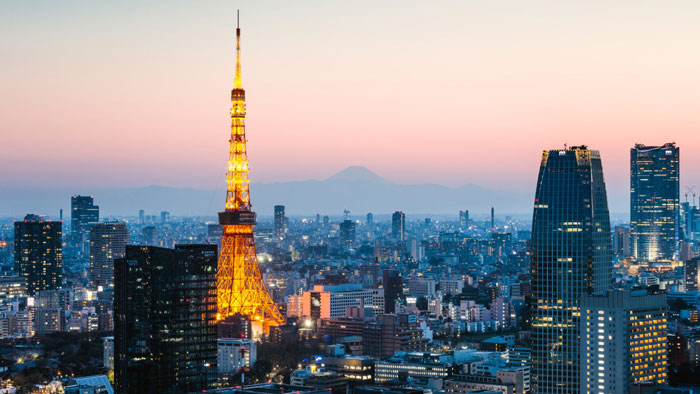
Day 1: Arrival and Exploring Tokyo
I arrived at Haneda Airport and quickly checked into my accommodation to start the trip. I strolled through the Ginza district that evening, appreciating its high-end shops and vibrant nightlife. Meiji-jingu Shrine provided a serene retreat before I wandered Yoyogi Park. I visited the Shinjuku Gyoen National Garden and marveled at the Nezu Museum’s art collection. Later, I experienced the crowded Shibuya Crossing and explored Omote-sando. Takeshita Street in Harajuku and Shinjuku Golden Gai’s tiny bars were the highlights of my evening. The panoramic view from the Tokyo Metropolitan Government Building ended my day perfectly.
Day 2: Tokyo Landmarks
The day started with a visit to the Tokyo Imperial Palace’s beautifully landscaped grounds. Akihabara, famous for electronics, offered a vibrant contrast. Nakamise-Dori’s traditional shops led me right to Senso-Ji, Tokyo’s oldest temple. I revisited Shinjuku Gyoen National Garden to enjoy another peaceful break and had a delightful ramen at Ichiran. The breathtaking views from the Shibuya Sky Deck capped off my exploration in Shibuya. The immersive experience at Harry Potter World added some magic, while the Micropig Café offered a uniquely cute diversion. Finally, I felt a sense of calm at the Meiji Shrine.
Day 3: Hakone Day Trip
Day three took me out of Tokyo to Hakone. Known for its hot springs, Hakone offered a refreshing change from the city’s pace. I marveled at the views of Mount Fuji from the iconic Hakone Ropeway. A relaxing cruise across Lake Ashi and a visit to the Hakone Open-Air Museum were among the day’s highlights.
Day 1: Arrival And Exploring Asakusa
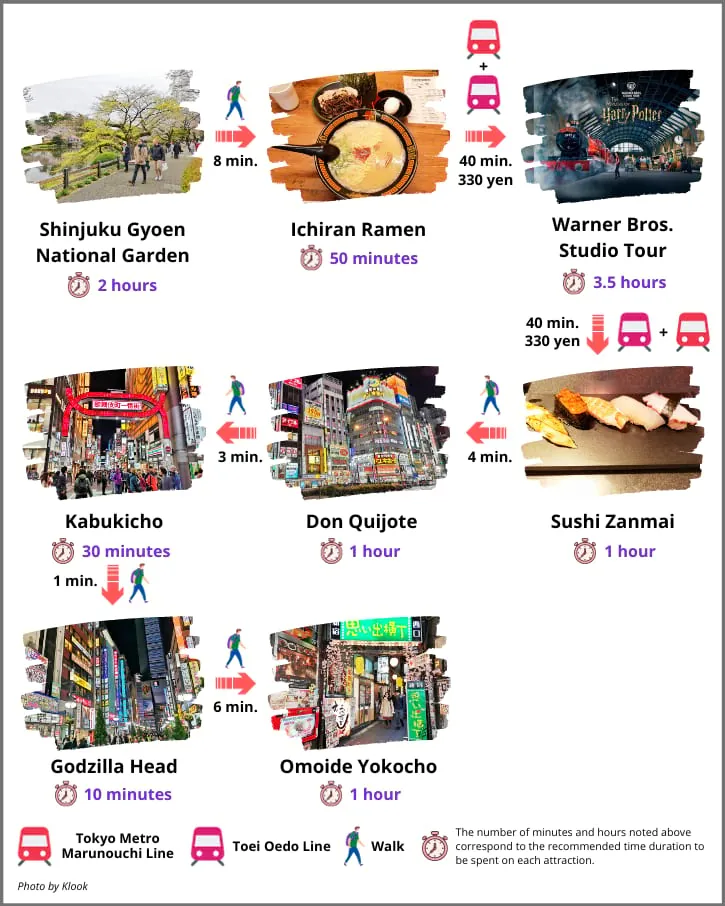
On my first day in Tokyo, I dove straight into the city’s rich culture and history by exploring Asakusa. Here’s a detailed account of my experiences.
Senso-ji Temple
I started by visiting Senso-ji Temple, one of Tokyo’s most vibrant and popular temples. The temple, known for its iconic Kaminarimon Gate, welcomed me with a massive red lantern that added a touch of grandeur. As I walked through the gate, the bustling atmosphere added to the allure of the temple grounds.
The temple complex housed various structures, each rich in history. The main hall drew my attention with its impressive architecture, while the five-storied pagoda exuded a serene ambiance. Devotees and tourists filled the area, adding a lively touch to the sacred space. Incense wafted through the air as I made my way around, enhancing the spiritual experience. Senso-ji stood as a testament to Tokyo’s ability to blend past and present seamlessly.
Nakamise Shopping Street
After Senso-ji Temple, I wandered through Nakamise Shopping Street. This historic street took me on a nostalgic journey. With over 90 shops, Nakamise encapsulated the essence of traditional Japanese commerce. Souvenir shops lined the path, offering a variety of keepsakes like fans, windchimes, and daruma dolls.
Amidst the vibrant stalls, I found numerous snack vendors. I indulged in local treats like ningyo-yaki (doll-shaped cakes) and senbei (rice crackers), each bite a taste of Tokyo’s culinary artistry. The narrow street buzzed with life, as locals and tourists perused the diverse offerings. Nakamise’s charm lay in its ability to connect the present to its storied past.
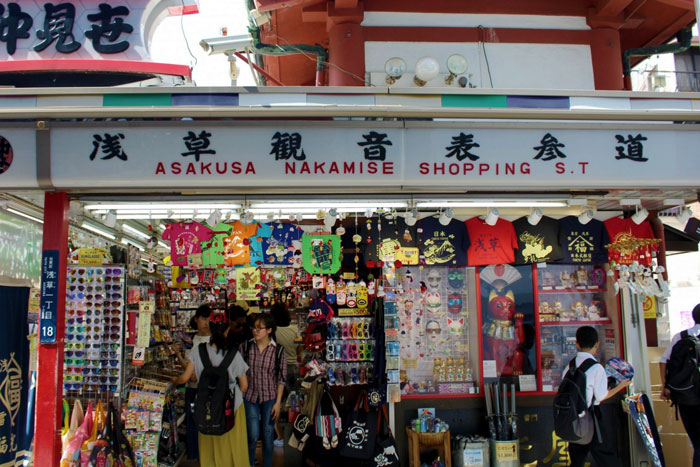
Sumida Park
My exploration led me to Sumida Park, a scenic spot perfect for a leisurely stroll. The park, situated along the Sumida River, provided a breath of fresh air in the urban world. I meandered through the park, captivated by views of cherry blossom trees, even though they were out of season.
Sumida Park offered more than just natural beauty. The sight of Tokyo Skytree looming above added a modern touch to the serene environment. As I walked along the river, I noticed locals enjoying picnics and boat rides, reflecting the park’s role as a community hub. The tranquil setting allowed me to unwind while soaking in Tokyo’s urban heartbeat.
By the end of the day, I felt immersed in Asakusa’s unique blend of tradition and modernity, eager for the adventures awaiting in the next days of my Tokyo journey.
Day 2: Modern Tokyo And Shibuya

My excitement for Day 2 in Tokyo centered around the dynamic and vibrant Shibuya district. Known for its bustling streets and modern attractions, Shibuya offers a perfect blend of cultural and contemporary experiences.
Shibuya Crossing
I began my day at Shibuya Crossing, one of the world’s busiest intersections. Surrounded by towering screens and the buzz of city life, the crossing epitomized Tokyo’s energy. As I crossed along with hundreds of others, I felt the pulse of the city. To fully appreciate the scene, I headed to one of the pedestrian overpasses. From there, I captured panoramic photos of the throngs of people and the mesmerizing chaos of the intersection.
Shibuya Sky Observation Deck
Next, I visited the Shibuya Sky Observation Deck. This modern structure offers sweeping views of Tokyo’s skyline. As I ascended to the top, the city’s vast expanse unfolded before me. At the observation deck, I stood in awe of the 360-degree views, spotting famous landmarks like Tokyo Tower and the distant outline of Mount Fuji. The views were particularly stunning at sunset, with the sky painted in hues of orange and pink. Shibuya Sky also features interactive exhibits and photo spots, making it a must-visit for anyone keen on capturing Tokyo’s essence.
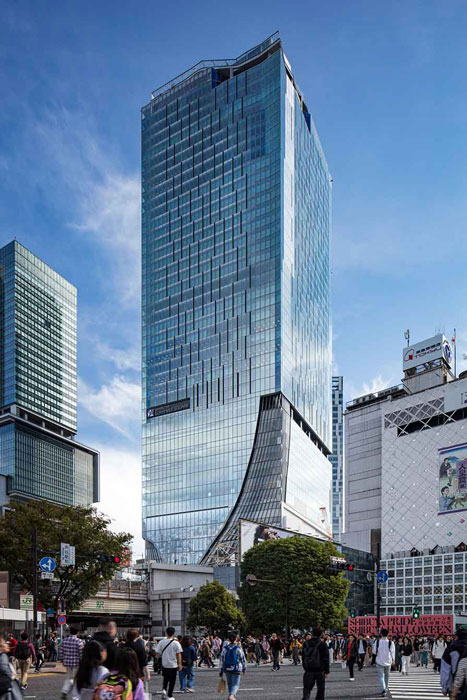
Meiji Shrine
My final stop was the serene Meiji Shrine. Located in a lush park in Shibuya, this Shinto shrine offers a peaceful retreat from the city’s hustle. Built in the early 1900s to honor Emperor Meiji, the shrine is surrounded by a tranquil forest. As I walked along the tree-lined paths leading to the shrine, I felt a profound sense of calm. The shrine itself, with its beautiful wooden structures and serene ambiance, offered a stark contrast to the modernity outside. I took part in a traditional purification ritual at the temizuya (water pavilion) before exploring the main hall and its intricate architecture.
Leaving Meiji Shrine, I reflected on the day’s journey through both the vibrant and tranquil sides of Tokyo, eager to see what the following days would bring in this incredible city.
Day 3: Harajuku And Shinjuku
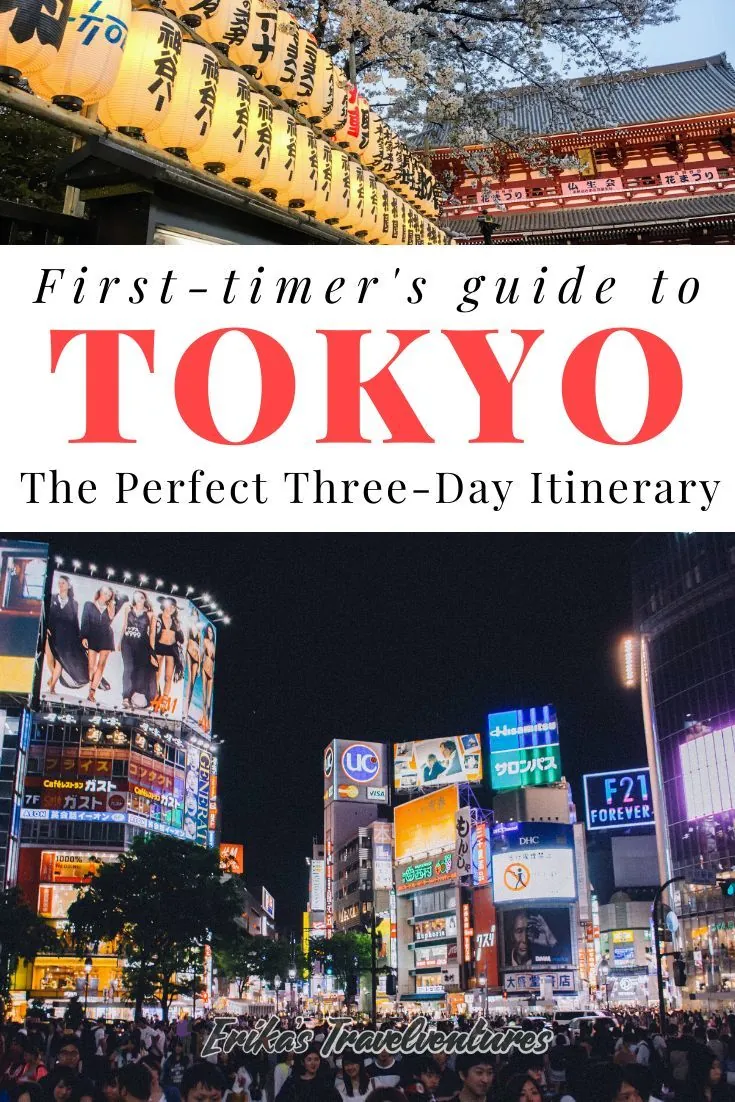
Day 3 takes me through the eclectic neighborhoods of Harajuku and Shinjuku. I am drawn by their unique blend of culture, fashion, and natural beauty.
Takeshita Street
I start my day in Harajuku at Takeshita Street, which is famous for its vibrant youth culture. The street is lined with trendy shops selling eclectic clothing, accessories, and souvenirs. I pick up some funky accessories and marvel at the range of styles on display. Unique eateries dot the street, and I can’t resist trying fluffy Japanese crepes and rainbow-colored cotton candy.
The Korean beauty stores tempt me with their latest skincare products. I then visit the Tokyu Plaza, known for its stunning mirrored entrance. The rooftop provides exceptional views of the bustling city below and is a perfect spot for photos. Before leaving, I stop by a Puri Kura photo booth to create fun, personalized photo stickers, a cherished Harajuku memento.
Yoyogi Park
After a lively morning, I head to Yoyogi Park for a peaceful retreat. This park, one of Tokyo’s largest, offers lush greenery and open spaces, perfect for a leisurely stroll. The park becomes a picturesque haven during cherry blossom season. The calm atmosphere contrasts beautifully with the morning’s frenetic energy.
On weekends, the park often hosts various events, festivals, and local performances. I find a tranquil spot by the pond and indulge in some people-watching, observing locals practicing tai chi and families enjoying picnics. It’s the ideal place to relax and recharge before moving on to the next adventure.
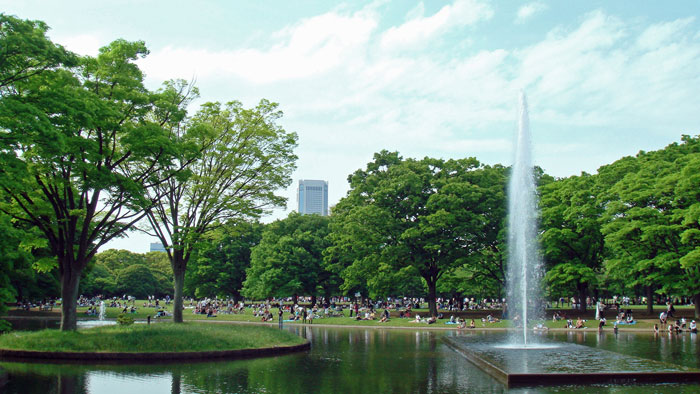
Shinjuku Gyoen National Garden
In the late afternoon, I explore the Shinjuku Gyoen National Garden, one of Tokyo’s most celebrated parks. The garden seamlessly blends Japanese, French, and English landscaping styles. I start in the Japanese Traditional Garden, appreciating the meticulously maintained traditional world, complete with koi ponds and teahouses.
The French Formal Garden and English World Garden offer different aesthetic experiences, brimming with seasonal flowers. The garden is incredibly popular for cherry blossom viewing, with over 1,000 cherry trees creating a breathtaking floral display.
As I wander through the garden, I take time to appreciate its serene beauty and historical significance. The tranquil environment provides a perfect end to the day, after exploring Harajuku’s vibrant streets and Yoyogi Park’s natural landscapes.
Day 4: Historical Tokyo And Ueno
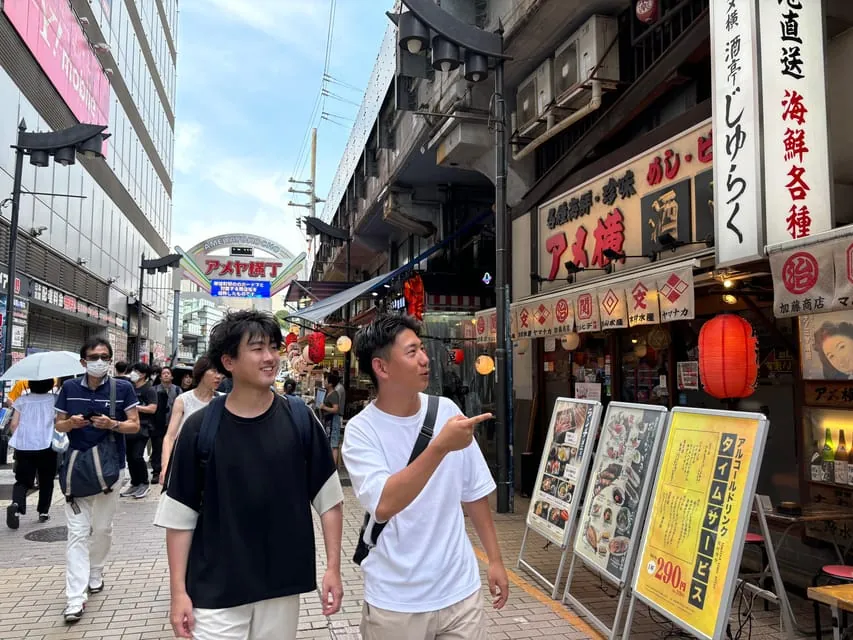
Day 4 in Tokyo focuses on the rich history and cultural treasures of Historical Tokyo and Ueno. The itinerary includes a morning at Ueno Park, a late morning visit to the Tokyo National Museum, and an afternoon exploring Ameya-Yokocho Market.
Ueno Park
Ueno Park, a must-see, is one of Tokyo’s largest green spaces. It’s perfect for a morning stroll, providing a break from the city’s fast pace. Known for cherry blossoms, Ueno Park transforms into a pink wonderland in spring. The park houses several attractions, including temples and shrines. I found the serene Shinobazu Pond, with lotus flowers, particularly peaceful. It’s also home to Ueno Zoo, Japan’s oldest zoo, if you’re interested in wildlife.
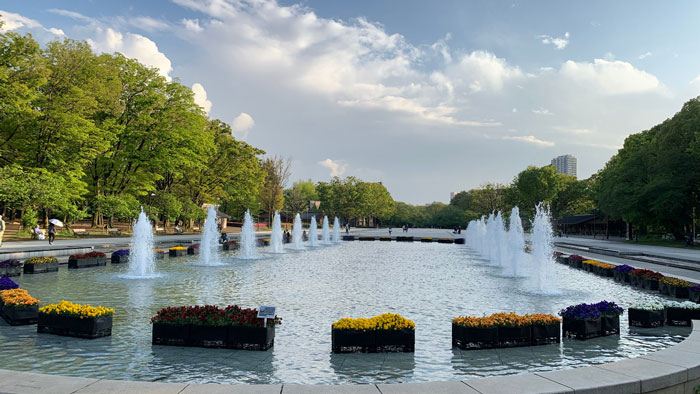
Tokyo National Museum
Late morning, I headed to the Tokyo National Museum inside Ueno Park. This institution is Japan’s oldest and largest museum, established in 1872. The museum’s collection amazed me; it includes over 110,000 items, such as ukiyo-e woodblock prints, ceramics, and swords. Exhibits span several buildings like the Honkan (Japanese Gallery), which showcases art from the Jomon period to the Edo period. The museum provides an insightful look into Japan’s artistic and cultural heritage, making it a must-visit for history buffs.
Ameya-Yokocho Market
In the afternoon, I ventured to Ameya-Yokocho Market, a bustling shopping street near Ueno Station. This market dates back to post-World War II and offers a glimpse into Tokyo’s past. Stalls sell everything from fresh seafood to souvenirs. I tried various street foods like takoyaki and taiyaki. The market’s vibrant atmosphere, with its mix of sounds, smells, and sights, is a sensory delight. It’s a perfect spot to shop for unique items and experience local culture.
Day 5: Pop Culture In Akihabara And Odaiba
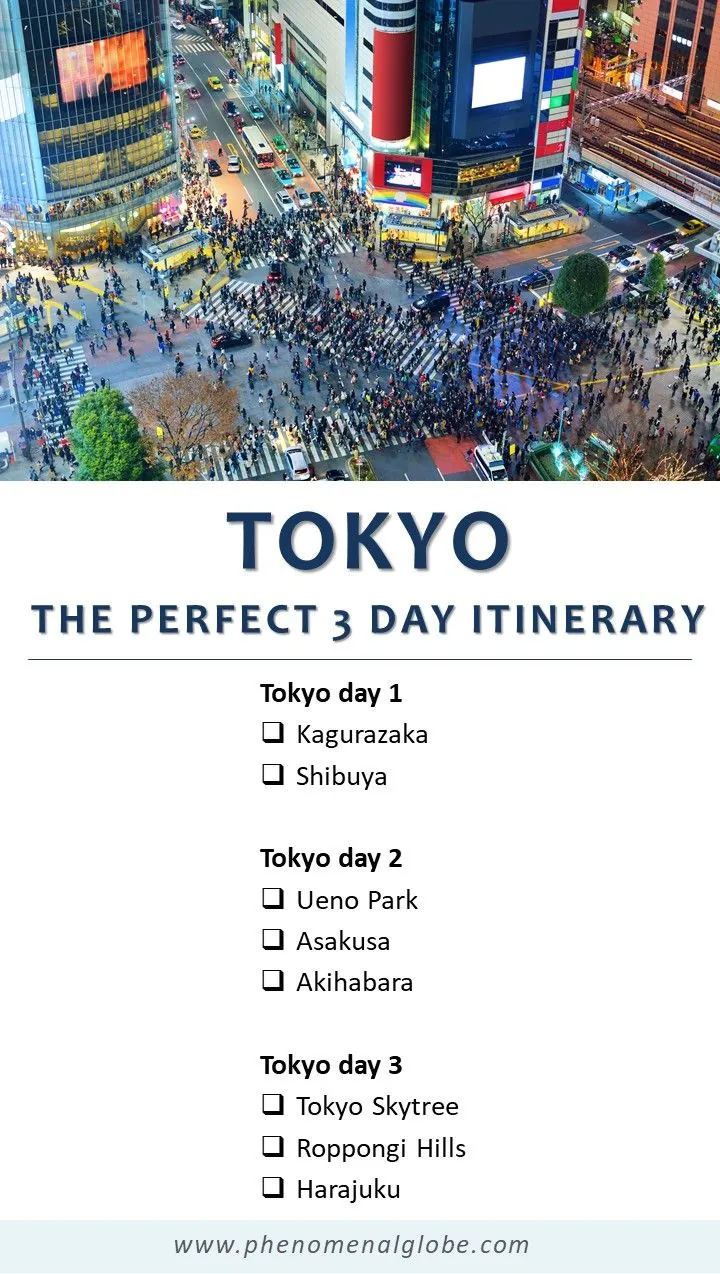
On Day 5 of my Tokyo trip, I dove into the vibrant pop culture scenes of Akihabara and Odaiba. From electronics and anime in Akihabara to digital art and seaside views in Odaiba, this day offered a diverse array of experiences.
Akihabara Electric Town
Getting to Akihabara: Starting the day in Asakusa, I took the Tsukuba Express Line to Akihabara Station. The 16-minute ride cost JPY 210.
Akihabara: Known as the hub for electronics, anime, and manga, Akihabara did not disappoint. I wandered through stores filled with the latest gadgets and tech. One standout was Super Potato, where I indulged in a nostalgic trip through video games’ history, with shelves packed with consoles and memorabilia from the past. Scattered among the electronic shops, anime stores offered everything from books to figurines, catering to enthusiasts of various series.
Maid Café: My visit wouldn’t be complete without experiencing a maid café. I chose Maidreamin’, where servers dressed in playful maid outfits provided a unique and quirky dining atmosphere. It was a blend of cute performances and themed food, making it an unforgettable part of exploring Akihabara.
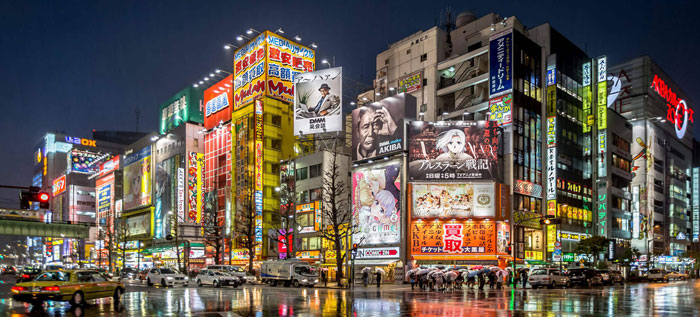
TeamLab Borderless Museum
Getting to Odaiba: From Akihabara, I hopped on the JR Yamanote Line to Shinbashi Station. A transfer to the Yurikamome Line took me directly to Odaiba Station in about 30 minutes.
TeamLab Borderless: Known for cutting-edge digital art, TeamLab Borderless blew me away. This museum featured immersive exhibits where boundaries between art and viewer vanished. I explored spaces filled with moving flowers, interactive light displays, and mirrored rooms. Each installation invited touch and interaction, making it a dynamic and ever-changing experience. Multiple visits would likely yield new discoveries, given the evolving nature of the displays.
Odaiba Seaside Park
Park Experience: After marveling at digital art, I headed to Odaiba Seaside Park. The park’s expansive green spaces and sandy beaches offered a serene contrast to the bustling city. I strolled along the shoreline, enjoying panoramic views of Tokyo Bay and the iconic Rainbow Bridge.
Activities: Odaiba Seaside Park isn’t just for relaxing. Water sports enthusiasts can enjoy windsurfing and paddleboarding. I opted for a rental paddleboard, finding it both challenging and fun amidst the gentle waves of the bay. For those preferring land, the park also features walking paths and gardens, perfect for leisurely exploration.
Restaurants and Shops: Nearby, I found several dining options and stores. The Decks Tokyo Beach complex offered a variety of restaurants with waterfront views. I chose a local seafood spot, relishing fresh sushi while watching the sunset. For some retail therapy, the Aqua City shopping mall featured a mix of international brands and Japanese shops, ideal for picking up unique souvenirs.
Day 5 in Tokyo balanced high-energy pop culture exploration with moments of tranquil reflection, offering a multifaceted experience of the city’s modern side.
Day 6: Day Trip To Nikko
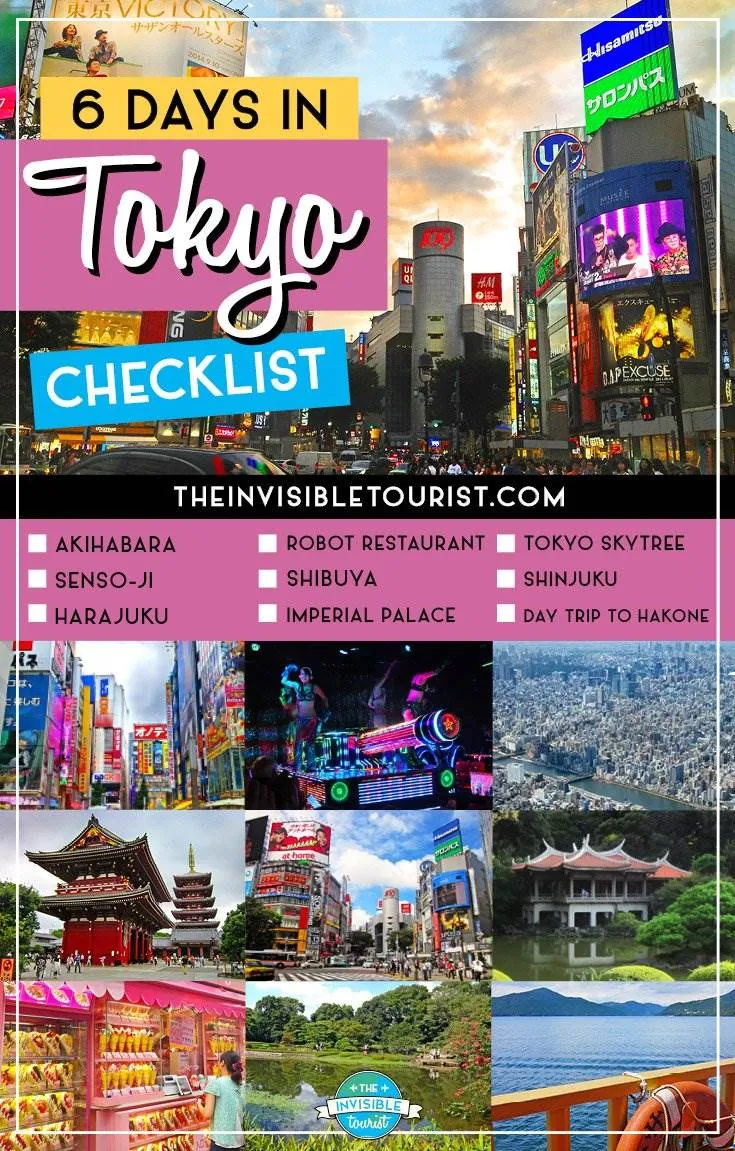
I embarked on a day trip to Nikko on Day 6, a perfect escape from Tokyo’s urban buzz. Known for its historic sites and natural beauty, Nikko is just a two-hour train ride from Tokyo.
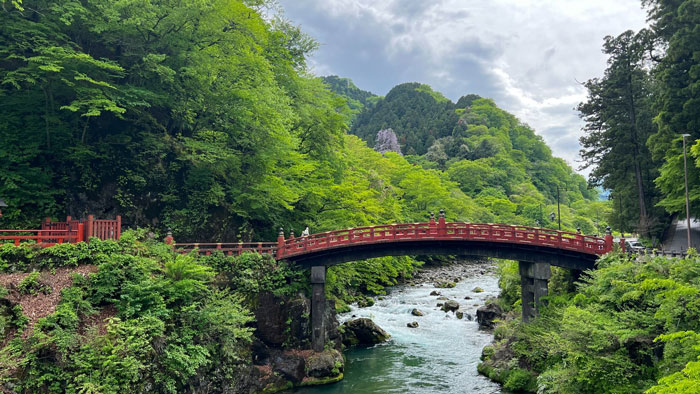
Toshogu Shrine
First stop, Toshogu Shrine, a UNESCO World Heritage Site. It’s one of Japan’s most famous shrines, showcasing ornate architecture and intricate wood carvings. The shrine honors Tokugawa Ieyasu, the founder of the Tokugawa Shogunate. Approaching the entrance, I noticed the vibrant colors and elaborate details on the Yomeimon Gate. With over 500 statues, including the Three Wise Monkeys, this gate is rich in symbolic art. Walking through the shrine, I marveled at the lavish decorations. Gold leaf, lacquer, and detailed sculptures adorned every corner. Exploring the various buildings, I felt a deep sense of history and artistry. To fully appreciate Toshogu Shrine, I recommend spending at least two hours here. The experience offers a glimpse into Japan’s cultural and spiritual heritage.
Kegon Falls
Next, I took a bus from Nikko Station to Kegon Falls, a 45-minute ride offering scenic views. Kegon Falls stands as one of Japan’s three most beautiful waterfalls, plunging 97 meters (318 feet) into the basin below. The waterfall is especially stunning in autumn, when the surrounding trees turn vibrant shades of red, orange, and yellow. Viewing platforms provide excellent vantage points to capture this natural wonder. An elevator ride took me closer to the base, where the sound of rushing water and mist in the air enhanced the experience. Above, the foliage provided a colorful backdrop, creating picture-perfect moments. Don’t miss this during a visit to Nikko; it’s a highlight for nature lovers.
Lake Chuzenji
My final stop was Lake Chuzenji, a scenic lake surrounded by mountains. Known for its stunning autumn colors, the lake offered a serene end to my day trip. Formed by volcanic activity from nearby Mount Nantai, Lake Chuzenji boasts crystal-clear waters and panoramic views. While walking along the shoreline, I saw reflections of the colorful trees in the calm water. Several walking trails and viewing platforms provided opportunities for leisurely exploration. The nearby town of Chuzenji offers cafes and restaurants, perfect for a relaxing meal with a view. I enjoyed a local specialty, yuba (tofu skin), which is a delicacy in the region. A visit to Lake Chuzenji is a peaceful way to soak in Nikko’s natural beauty before heading back to Tokyo.
Conclusion
My 6-day itinerary in Tokyo offered a perfect blend of urban excitement and serene escapes. From the bustling streets of Shibuya to the tranquil beauty of Nikko I experienced the diverse facets of Japanese culture and nature. Each day brought new adventures and unforgettable memories. Whether you’re a first-time visitor or a seasoned traveler Tokyo’s vibrant energy and rich history make it a destination worth exploring. This itinerary ensures you won’t miss the highlights while also discovering hidden gems that make Tokyo truly unique.
Frequently Asked Questions
What is Toshogu Shrine known for?
Toshogu Shrine is renowned for its intricate wood carvings and symbolic art, including the iconic Three Wise Monkeys. It is a UNESCO World Heritage Site honoring Tokugawa Ieyasu.
How far is Nikko from Tokyo?
Nikko is approximately 125 kilometers north of Tokyo. It can be reached in about 2 hours by train.
What can I see at Kegon Falls?
Kegon Falls is one of Japan’s most beautiful waterfalls, offering picturesque views and a chance to get up close to the cascading water.
What makes Lake Chuzenji special?
Lake Chuzenji is surrounded by mountains and is known for its stunning autumn colors and tranquil ambiance, making it a perfect spot for relaxation and nature appreciation.
How does a day trip to Nikko enhance a Tokyo visit?
A day trip to Nikko adds a blend of cultural immersion and nature exploration to a Tokyo visit, offering historic sites like Toshogu Shrine and natural wonders like Kegon Falls and Lake Chuzenji.
Is a visit to Nikko suitable for a single day trip?
Yes, Nikko’s primary attractions, such as Toshogu Shrine, Kegon Falls, and Lake Chuzenji, can be comfortably explored in a day trip from Tokyo.
What are the main highlights of Nikko’s historic sites?
Nikko is famous for its ornate Toshogu Shrine, with its historic significance, intricate decorations, and cultural symbolism, particularly the Three Wise Monkeys.
Are there any unique experiences to be had at Kegon Falls?
Visitors can enjoy panoramic views of Kegon Falls from observation platforms and take an elevator to get closer to the base, experiencing the full power and beauty of the waterfall.
When is the best time to visit Lake Chuzenji?
The best time to visit Lake Chuzenji is during autumn when the surrounding foliage changes color, creating a stunning and serene environment.

